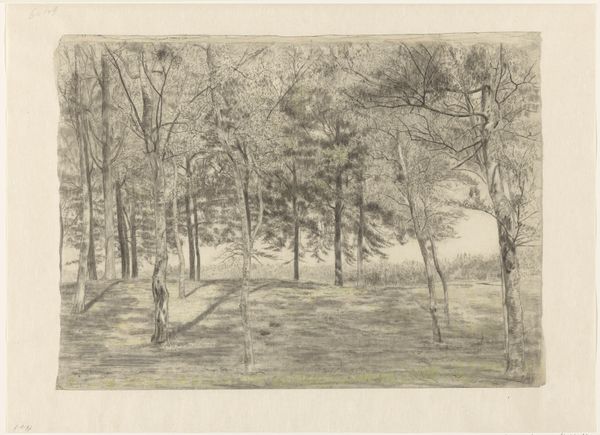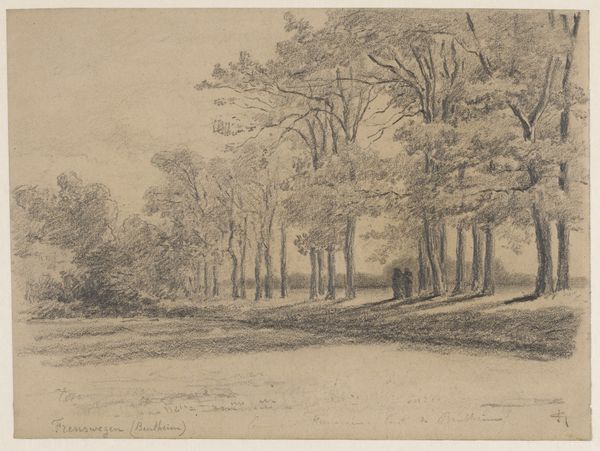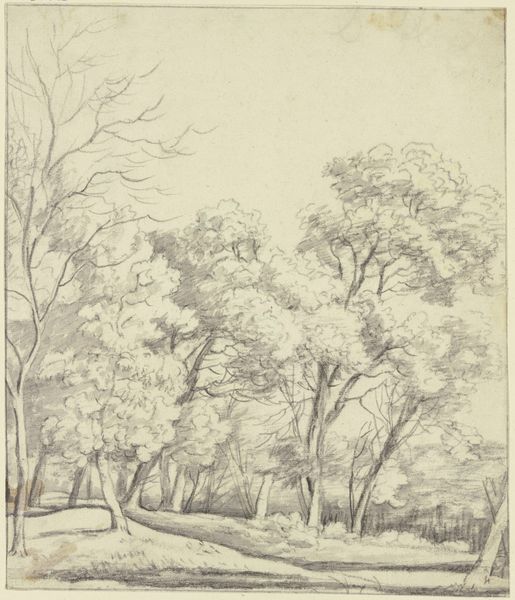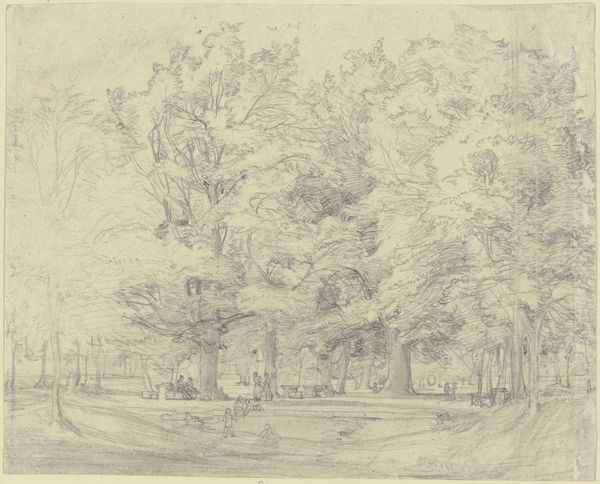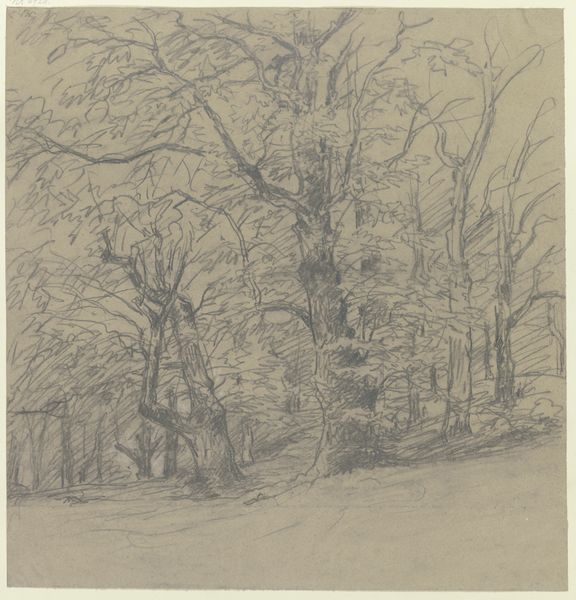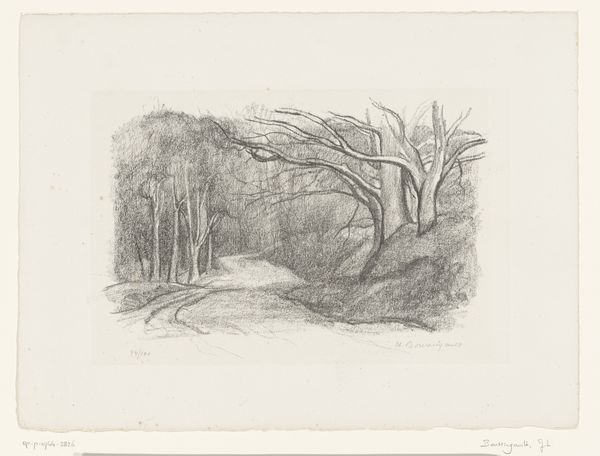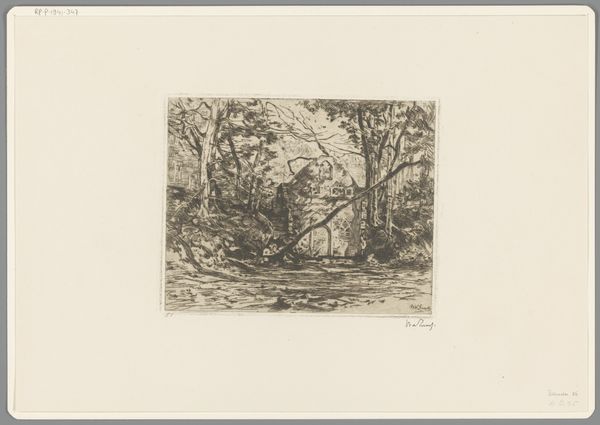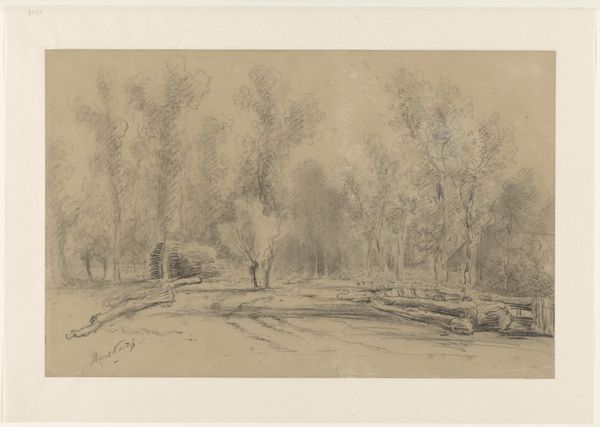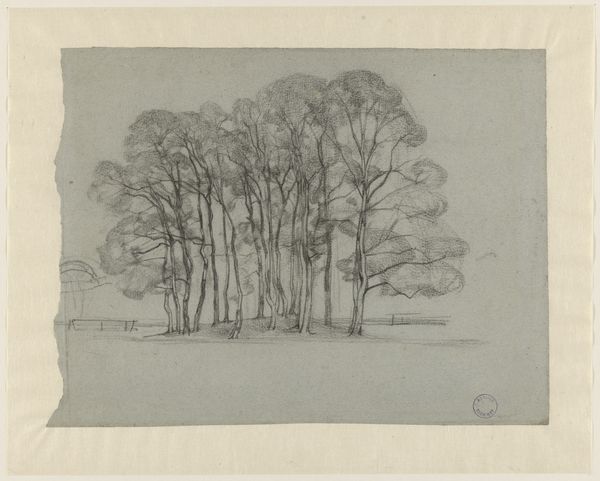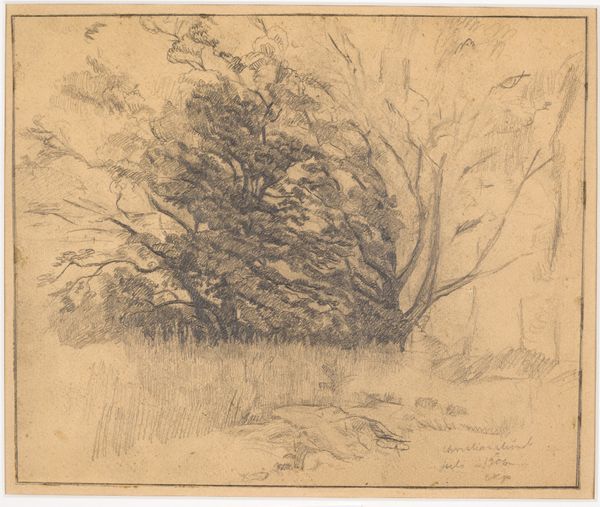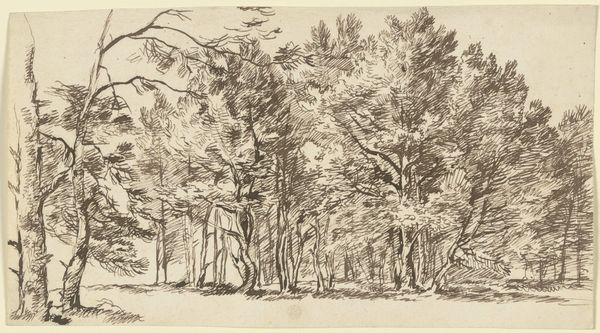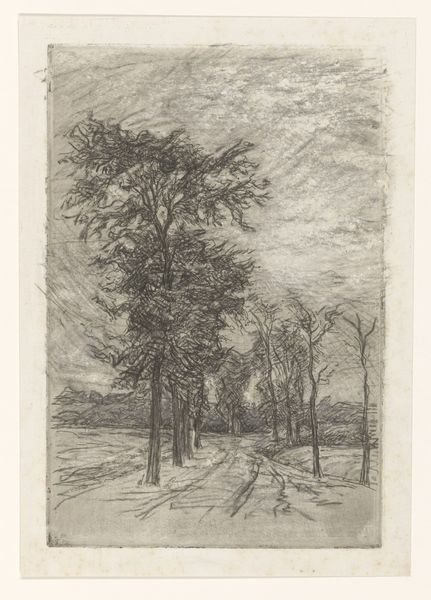
drawing, paper, pencil
#
pencil drawn
#
tree
#
drawing
#
aged paper
#
light pencil work
#
impressionism
#
pencil sketch
#
landscape
#
paper
#
form
#
personal sketchbook
#
ink drawing experimentation
#
pen-ink sketch
#
pencil
#
line
#
sketchbook drawing
#
pencil work
#
sketchbook art
#
realism
Dimensions: height 172 mm, width 174 mm
Copyright: Rijks Museum: Open Domain
Curator: Here in gallery ten, we have Jeanne Marie Heynsius's "Landschap met bomen," or "Landscape with Trees," created in 1881. It's a delicate pencil drawing on paper, currently held here at the Rijksmuseum. Editor: It strikes me immediately as a place of refuge. The trees seem to offer protection, and the monochromatic rendering lends it a dreamlike, almost ghostly quality. The perspective gently draws the eye inward. Curator: That's a keen observation. Heynsius was working within a period of immense social change and increasing industrialization. Landscape art became a site where artists and the public alike could grapple with anxieties around modernity. Did the urban centers meet the basic and varied needs of the inhabitants? Editor: Precisely, this drawing isn't simply a neutral representation of nature, but an active engagement with contemporary issues. A silent yet powerful voice. Considering that landscape painting was typically associated with men, her work takes on even more weight when thinking about access and exclusion. Curator: Absolutely. The landscape offers this artist an invitation to express a quiet sort of resistance against prevailing norms. We know Heynsius studied art, but not necessarily the full extent to which women were or were not encouraged at the time to engage in landscape art. It opens an entry for further analysis. Editor: It’s fascinating to consider, especially when considering this ethereal execution with very light pencil work that gives it a gentle touch. In comparison to male artist portrayals in the era, do you suppose her intentions differed? I would also want to know if Heynsius saw any particular artist landscape depictions prior. Curator: Good questions. We have yet to definitively map those influences. However, it’s clear that, whether intentionally or not, Heynsius is entering a dialogue, shaping and being shaped by the landscape as a place imbued with both personal and societal significance. The artwork shows the influence of Realism in that period with a sketch-like approach and technique. Editor: A subtle and compelling entry in the ongoing narrative of our relationship to nature and one another. Curator: Yes, an insightfully made artistic depiction from our own collection of artworks from the past.
Comments
No comments
Be the first to comment and join the conversation on the ultimate creative platform.
